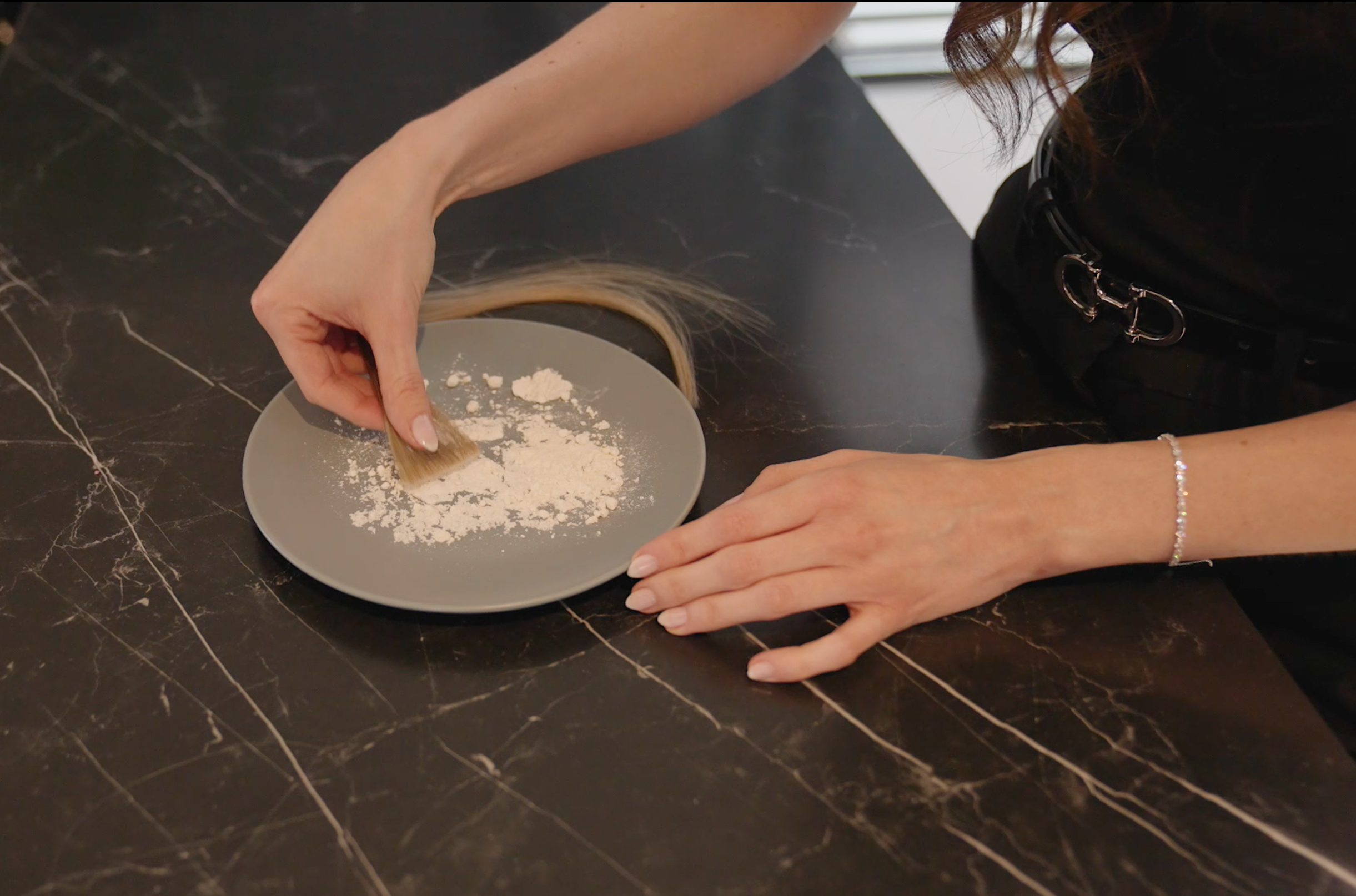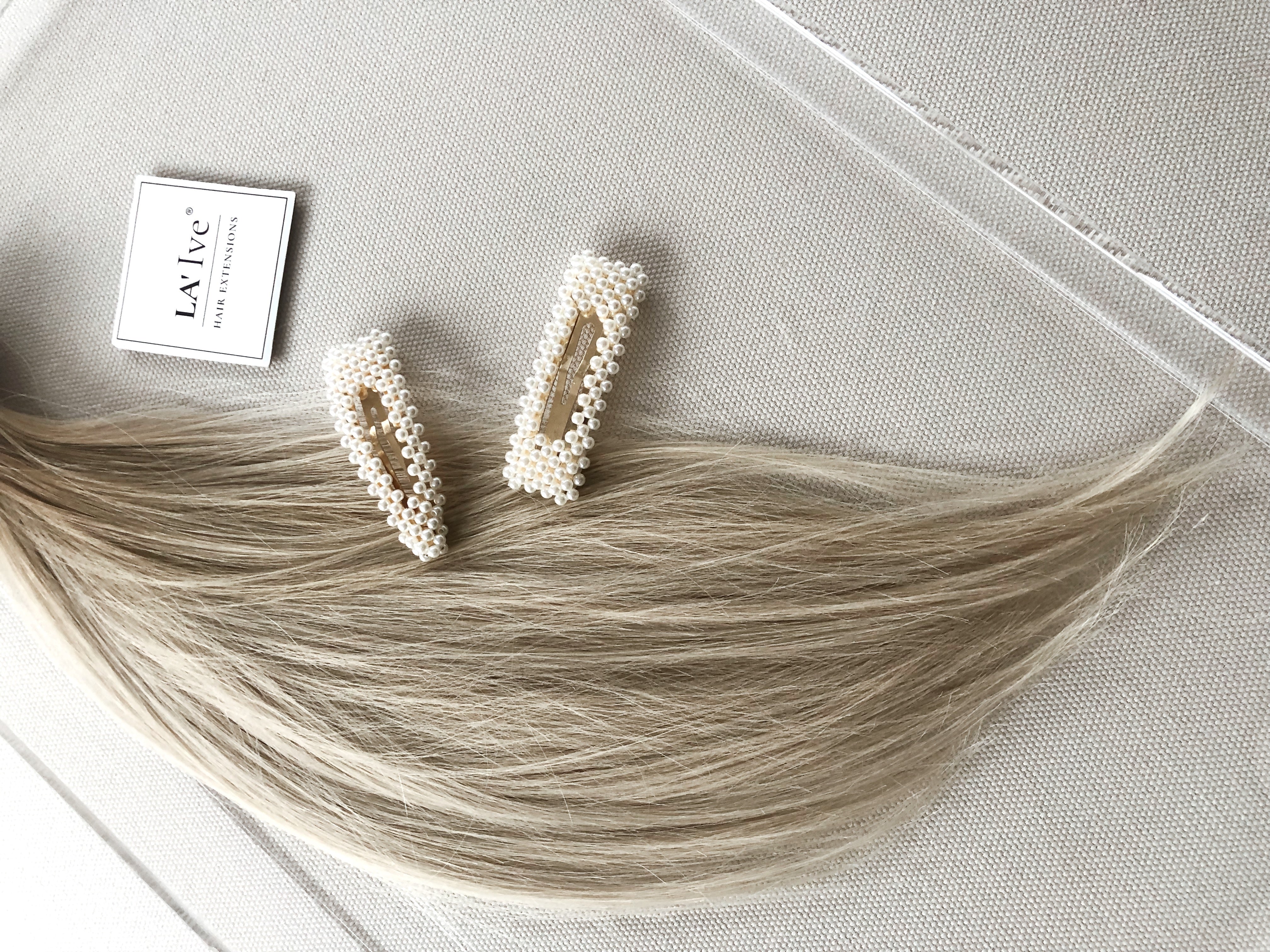Article: Remove old tape adhesive - quickly, cheaply & gently.

Remove old tape adhesive - quickly, cheaply & gently.
Removing old tape extensions glue – the easy method with flour or baby powder
Anyone who wears tape extensions knows the problem: After removal , adhesive residue remains at the connection points . In the past, people often resorted to oil, alcohol, or even nail polish remover. But these methods are not only cumbersome, they almost always result in everything sticking —the tapes, their hands, and the work surface.
Fortunately, there is a much simpler solution.
The modern method:
Remove adhesive residue with flour or baby powder
Instead of messing around with greasy oils or aggressive products, a simple trick is enough: flour or baby powder .
Here's how:
1. Put some baby powder on a plate .
2. Gently dab the glued areas into baby powder until the glue sets.
3. Let the glue dry briefly.
4. Simply peel off the old adhesive strip in one piece .
The result: The tapes are clean and immediately ready to be covered with new adhesive strips.
Why flour or baby powder is better
-
No sticking: fingers and surface stay clean.
-
Gentle: No chemicals, no greasy film, no residue.
-
Fast: The joints are cleaned within a few minutes.
-
Cheap: Almost everyone has flour or baby powder at home.
Removing tape extension adhesive used to be a sticky affair. Now, with flour or baby powder, it's easy, clean, and reliable. The old adhesive strip can be easily peeled off in one piece—saving you the hassle of greasy hands and allowing you to reuse your extensions right away.


